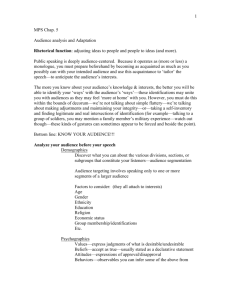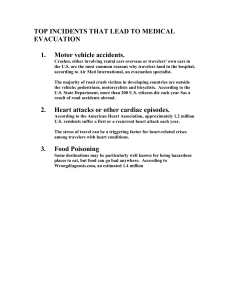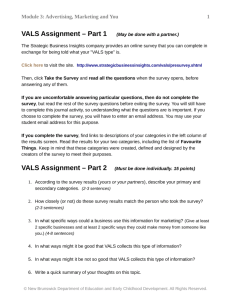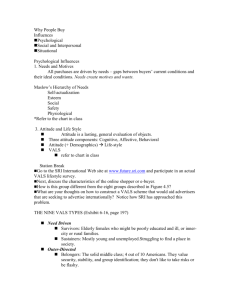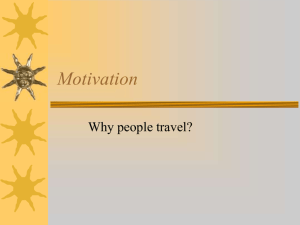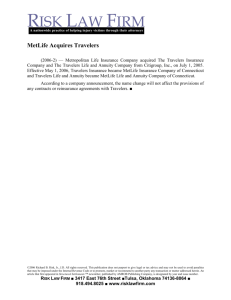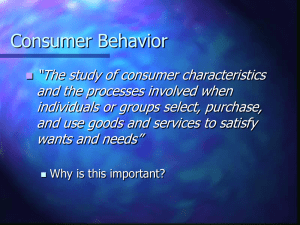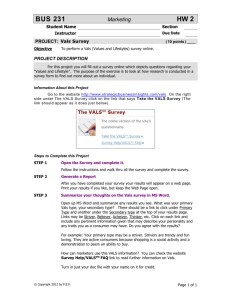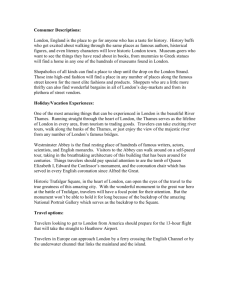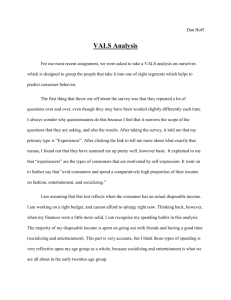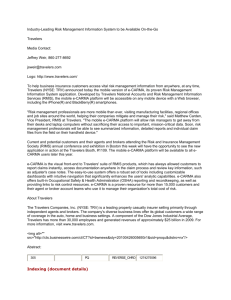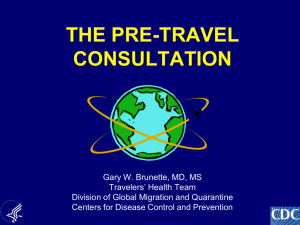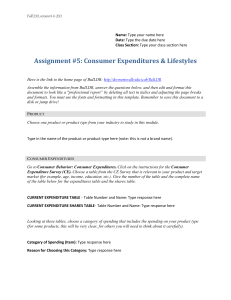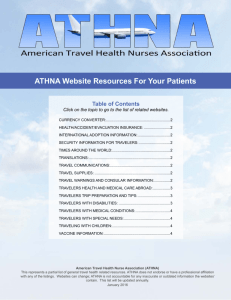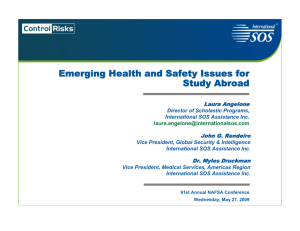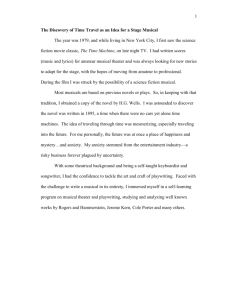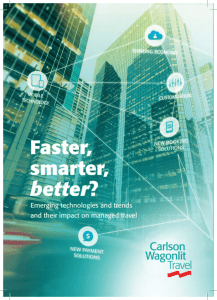54 - RestoNews
advertisement
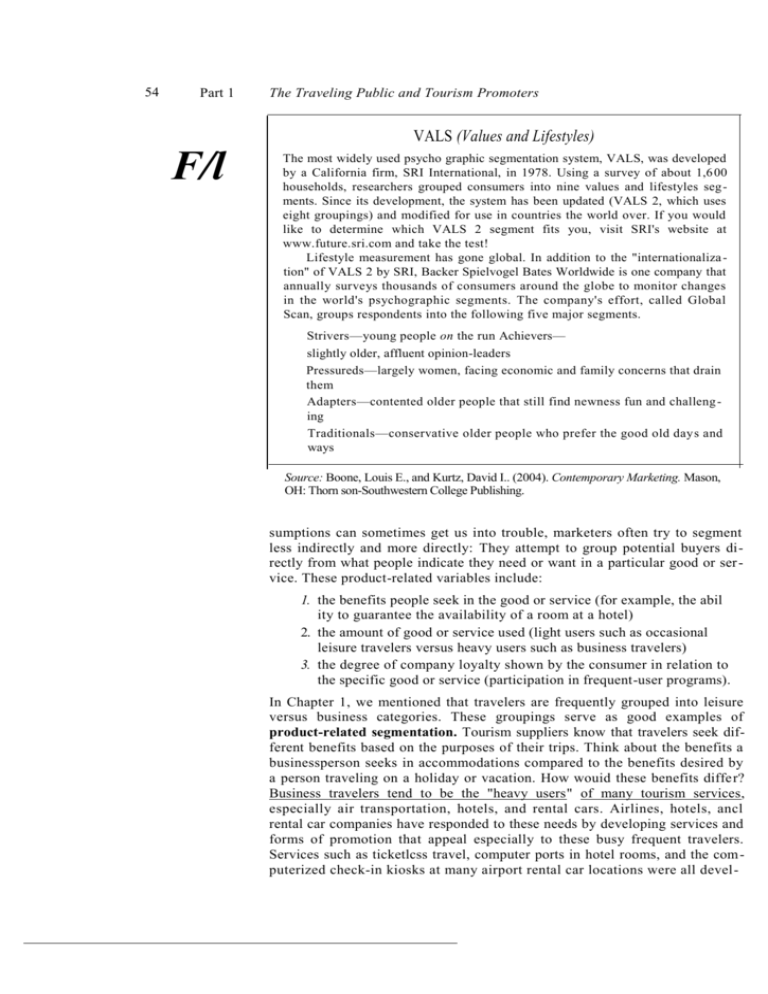
54 Part 1 The Traveling Public and Tourism Promoters VALS (Values and Lifestyles) F/l The most widely used psycho graphic segmentation system, VALS, was developed by a California firm, SRI International, in 1978. Using a survey of about 1,6 00 households, researchers grouped consumers into nine values and lifestyles segments. Since its development, the system has been updated (VALS 2, which uses eight groupings) and modified for use in countries the world over. If you would like to determine which VALS 2 segment fits you, visit SRI's website at www.future.sri.com and take the test! Lifestyle measurement has gone global. In addition to the "internationaliza tion" of VALS 2 by SRI, Backer Spielvogel Bates Worldwide is one company that annually surveys thousands of consumers around the globe to monitor changes in the world's psychographic segments. The company's effort, called Global Scan, groups respondents into the following five major segments. Strivers—young people on the run Achievers— slightly older, affluent opinion-leaders Pressureds—largely women, facing economic and family concerns that drain them Adapters—contented older people that still find newness fun and challeng ing Traditionals—conservative older people who prefer the good old days and ways Source: Boone, Louis E., and Kurtz, David I.. (2004). Contemporary Marketing. Mason, OH: Thorn son-Southwestern College Publishing. sumptions can sometimes get us into trouble, marketers often try to segment less indirectly and more directly: They attempt to group potential buyers directly from what people indicate they need or want in a particular good or ser vice. These product-related variables include: 1. the benefits people seek in the good or service (for example, the abil ity to guarantee the availability of a room at a hotel) 2. the amount of good or service used (light users such as occasional leisure travelers versus heavy users such as business travelers) 3. the degree of company loyalty shown by the consumer in relation to the specific good or service (participation in frequent-user programs). In Chapter 1, we mentioned that travelers are frequently grouped into leisure versus business categories. These groupings serve as good examples of product-related segmentation. Tourism suppliers know that travelers seek different benefits based on the purposes of their trips. Think about the benefits a businessperson seeks in accommodations compared to the benefits desired by a person traveling on a holiday or vacation. How wouid these benefits differ? Business travelers tend to be the "heavy users" of many tourism services, especially air transportation, hotels, and rental cars. Airlines, hotels, ancl rental car companies have responded to these needs by developing services and forms of promotion that appeal especially to these busy frequent travelers. Services such as ticketlcss travel, computer ports in hotel rooms, and the computerized check-in kiosks at many airport rental car locations were all devel-
